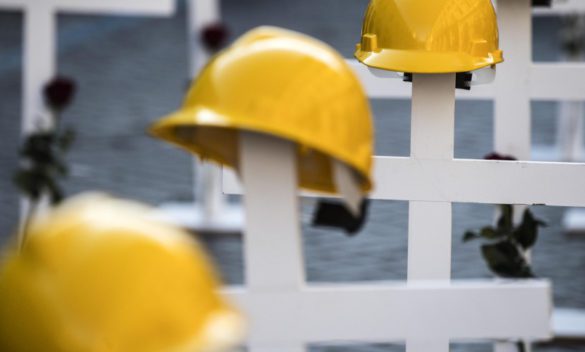The massacre of Casteldaccia: clarity beyond pathos, without the usual hypocrisies

Explain to me the following article briefly:
“A horrible end. Agony for relatives, friends, colleagues. For the firefighters, the police, the carabinieri, the emergency responders who intervened in mass. And then the inevitable corollary of grieving reactions, the usual worn-out liturgy of outraged statements, and the instrumental and demagogic pointing of fingers against the big targets, without even having a clear understanding of what really happened in those cursed sewer pipes.
The foul stench of sewage that had been emanating from below for days was tragically replaced yesterday around lunchtime by the tragic miasma of death. The tears of wives and children will not be enough to erase it. Nor will the discouragement of the workers or the institutional flags draped in mourning during the funerals. What is needed instead are thorough, serious, meticulous investigations.
Investigators capable of cutting through the heavy and dangerous veil of pure pathos that is already enveloping this latest tragedy. Clarity is needed, without discounts and without emotional reluctance. Why did something like this happen? Is the fire chief right in saying that adequate precautions would have prevented the workers from dying one after the other in the sewers, like trapped mice? Is the president of Amap right in supporting the same theory, calling the lack of protective masks absurd and incomprehensible? Or do the unions have a point, rushing to declare a strike for today, accusing the logic of profit and savings engineered at the expense of workers?
It is more than likely that both versions are realistic, to the point of mixing and confusing themselves in a deadly cocktail of incompetence, recklessness, unpreparedness, and approximation that renders a debate essentially based on statistics sterile. What good is it to dwell on the fact that at least 4,000 people used to die annually up to 50 years ago if, for three decades now, theoretically stricter regulations and technological progress more inclined to safety have never managed to reduce workplace fatalities to below a thousand deaths per year? And does it serve any purpose to play around with the meager -2 and something percent decrease in victims in the first quarter of this year compared to the same period in 2023? The absolute number matters: 191 deaths at the end of March according to Inail (so we have already exceeded 200).
People, not numbers. The logic of low-cost subcontracting employed by even municipally-run companies increasingly strapped for cash and manpower – and these companies in Palermo, like Amap and others, are fully aligned with the trend – ends up cutting corners on safety measures, which should be fundamental. If inspections are lacking and consequent penalties are missing, then the risk of deregulation increases. However, the first and most anguishing question remains unanswered for the moment: why did those workers descend into the sewers without adequate protection? Who decided that? Were they undertrained and lacking the necessary training or tragically reckless? Whose responsibility is it? Let’s put aside hypocrisies and preconceptions, we should all start together – whether innocent or guilty – by demanding an answer to this question first.”
La strage di Casteldaccia: chiarezza oltre il pathos, senza le solite ipocrisie
Sicilian news
Tutte le Notizie in Italiano
SIGDS